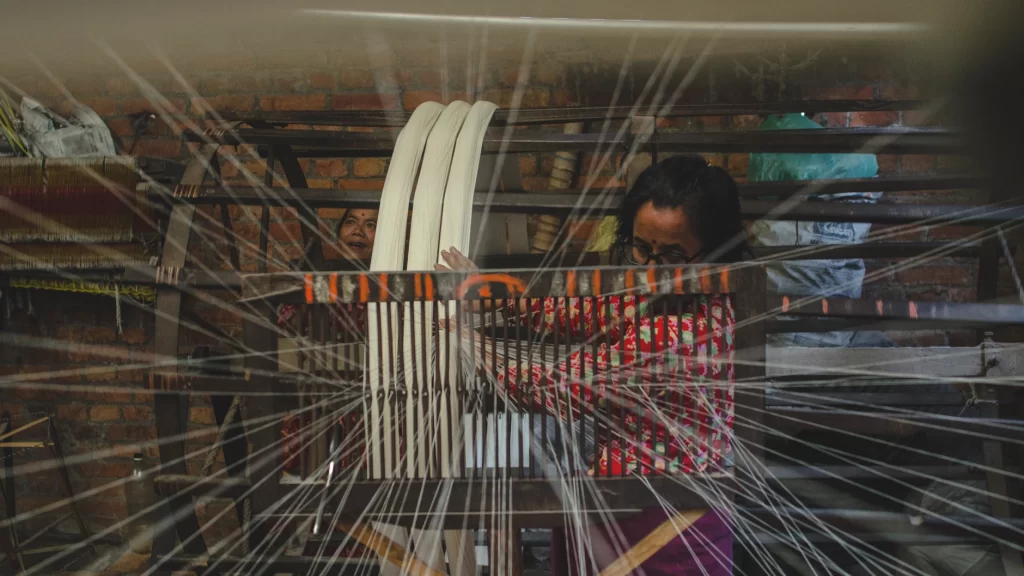When we think of spending a little extra on intimate wear or lingerie, we usually turn to luxury or high-street brands. Most of our daily-use underwear is picked out at multi-department stores, sold in packs of three or five. And, the label will tell you it’s a cotton-blend.
But, what exactly does that mean and imply?
Why do we need to consider more sustainable options for our underwear?
And, what does ‘sustainable options’ even mean?
A recent investigation by the University of New Mexico Health Sciences revealed the alarming presence of microplastics in every single human placenta they studied. The impact of synthetic materials can be life-threatening. These synthetic materials blended in our lingerie and intimate wear have a way of disintegrating over time. And, when washed they release microplastics and pollute our water systems that again make their way into our bodies. Our intimate areas, being highly sensitive, should not be exposed to such materials. And, here’s why we need more sustainable underwear.

Our health is on the line
The pelvis and the groin tend to be warmer and more humid than the rest of our bodies, making them more prone to infection and rashes. Needless to say, synthetic materials and dyes are not the best option. Synthetic dyes contain amines, a compound derived from ammonia, which is easily activated by moisture, causing it to seep into our skin, disrupting our endocrine (hormonal) systems. “There is a 100% correlation between the rise of hormonal imbalances and UTIs women are facing today and the rise of synthetic materials in our lingerie,” explains Sonal Jain Baid, who started underwear brand Maayu, after her teenage daughter’s brush with PCOD (Polycystic Ovarian Disease). “The degradation of our planet due to synthetics is similar to what’s happening with our bodies because of these toxic materials in our clothes.” While more research is underway, preliminary studies have shown a link between decreased sperm count as well as libido, in men who wear synthetic underwear.

Synthetic dyes are highly carcinogenic, too, and can easily enter into our body systems through our intimate areas, due to the synthetics in our underwear. “Currently, there are no regulations in place on the dyes being used in our lingerie and innerwear,” explains Abha Aggarwal, founder of Rōm Rōm, a homegrown lingerie brand. So it is up to us to do a little digging into what we’re wearing. “Natural dyes are inherently anti-bacterial and do not react easily with our intimate areas,” says Sidhanth Sodhani, founder of Sodhani Biotech, a pioneering company making natural dyes.
We need better designs
For most of us born in the 90s or earlier, our childhood consisted of wearing bloomers. The loose cotton underwear was super comfy, worked for a variety of sizes, and was better for our health. But, with time came more designs and we were suddenly bombarded with fancier, frillier designer intimate wear. A 2022 survey of the Indian market revealed 85% of women between the ages of 25 and 45 prioritize comfort while lingerie shopping, and want to buy items that are breathable and skin-friendly. However, this isn’t something you find easily enough on the high street. Think all those memes of women coming home after a long day at work, and feeling relief the minute they yank off their bras! “Tight-fitted innerwear tends to cause rashes,” adds Aggarwal, who is working to bring back the comfort of bloomers through Rōm Rōm’s handcrafted French knickers. Maayu, too, has a range of unisex boxers.
A 2020 study also found that tight-fitting underwear could cause lower motility (the ability of sperm to move) and genital heat stress. Basically, out with the tighty-whities and in with the boxers!

We need better materials
The sustainable inner market is awash with Tencel- and beechwood modal-based innerwear. But is that the best choice? Well, it’s certainly better than polyester, but not as good as cotton. “Gynecologists have always recommended pure cotton underwear,” says Sonal, who uses only organic cotton for her brand. The fabric is highly breathable and can absorb moisture, from both sweat or discharge, better than any other fabric. And, it doesn’t use as many resources and chemicals as modal. However, the cotton we find in underwear we buy on the high street is often blended with elastane, spandex, lycra, nylon and other synthetic materials to provide it with elasticity and durability. Even in smaller quantities, these synthetic materials can prove toxic, and they do release microplastics in the wash.
This isn’t the only reason to pick cotton. Most products made with natural materials tend to last longer, as synthetic materials disintegrate with every wash. “Cotton underwear will last you way longer than a spandex one,” explains Aggarwal, who is also working actively to make designer handwoven underwear inspired from European and American silhouettes through her label. “Cotton-synthetic underwear starts losing its quality pretty soon, as compared to only-cotton underwear.” Both Maayu and Rōm Rōm use only 100% organic cotton and handwoven cotton, respectively. They use plant-based dyes to add some colour, and eco-prints, prints derived from leaves and flowers, to add interesting designs and patterns to their offerings. We definitely need more such brands creating innerwear that’s prettier for the planet and prettier for you!
What has been your experience with the sustainable lingerie and intimate wear market in India? Tell us in the comments.






